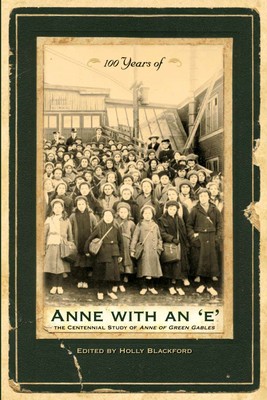The Original Spunky Redhead: Rutgers–Camden Scholar Commemorates Anne of Green Gables’ 100th Birthday

“Centennial celebrations have preoccupied our neighbors to the north all year long, but Anne’s reputation spans far and wide, crossing many national boundaries,” notes Holly Blackford, associate professor of English at Rutgers–Camden, who recently edited 100 Years of Anne with an “e”: The Centennial Study of Anne of Green Gables (University of Calgary Press, 2009).
Blackford’s book highlights the global appeal of Anne Shirley with scholarship from Australia, Canada, Germany, Ireland, and the United States. “Anne makes herself a home in the novel, a theme that invites many readers, wherever they live, to make room for her and make of her what they will,” says the author of the book Out of this World: Why Literature Matters to Girls (Teachers College Press, 2004).
The topics of essays also range from Montogomery’s broad influences, like popular women’s magazines and romantic poetry, to the writers her work has influenced, like Pippi Longstocking author Astrid Lindgren, who would often play Anne Shirley growing up.
Anne of Green Gables, which has sold over 50 million copies, more than To Kill a Mockingbird or Charlie and the Chocolate Factory, demonstrates shifting views of childhood that emerged during the turn of the century.
“The novel signals the end of the Victorian approach to childhood and acceptance of the 20th century psychological child. This shifting view can be seen in Montgomery’s journals, where she claims that although she began the story for a Sunday School paper, she ultimately ‘made “Anne” a real human girl,’” says Blackford.
The mother of four young children, Blackford plans on introducing Anne of Green Gables to her own family when her oldest turns 11, which she claims, is “roughly the age of the magical character herself.” But will Anne Shirley resonate with new readers in a world of contemporary characters like those from the popular Twilight series? Blackford says Montgomery’s classic heroine certainly shares concerns with today’s teens.
“Even if puffed sleeves hardly compare to pierced belly buttons, Anne is deeply concerned with how she measures up to cultural ideals, all the more so because she comes from a broken home and wants desperately to be loved and treasured,” remarks the Rutgers–Camden scholar. “If Anne were with us today, she might be reassured of acceptance when her hair, after she dyes it, ends up as green as her gables!”
A graduate of the University of California-Berkeley and Northwestern University, Blackford also researches authors including Louisa May Alcott, J.M. Barrie, Lewis Carroll, and Harper Lee. She teaches courses on American, women’s, and children’s literature at Rutgers–Camden.
-30 -
Media Contact: Cathy K. Donovan
(856) 225-6627
E-mail: catkarm@camden.rutgers.edu